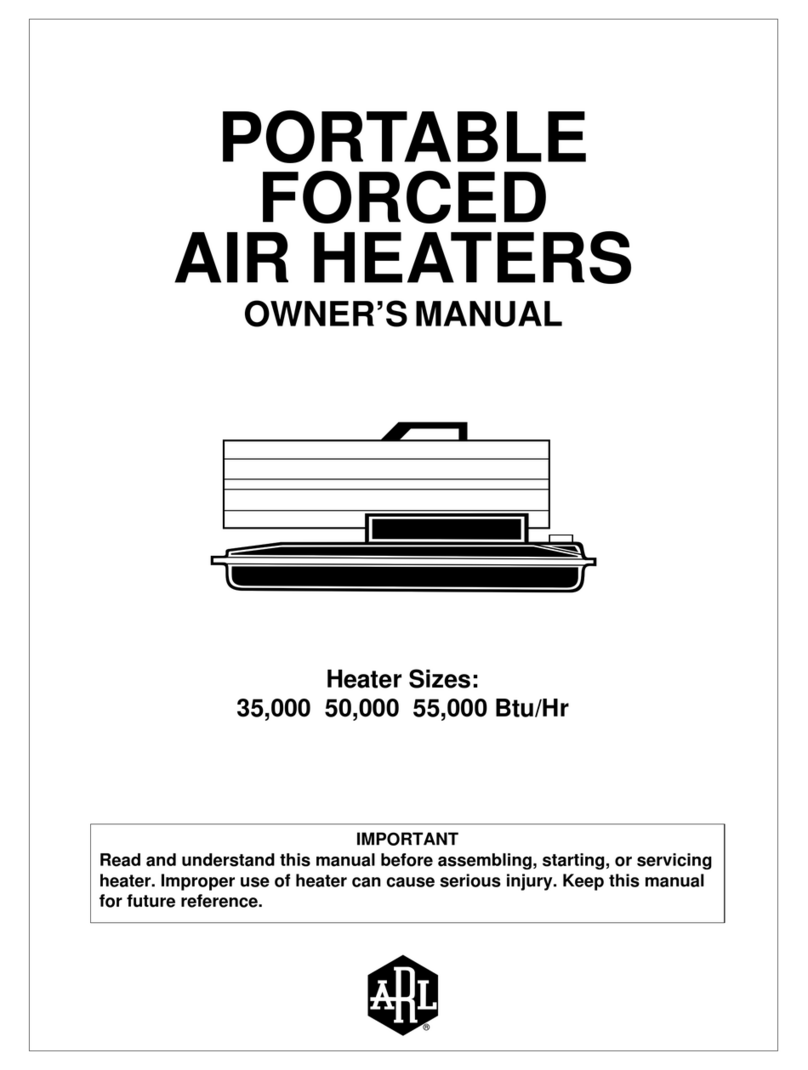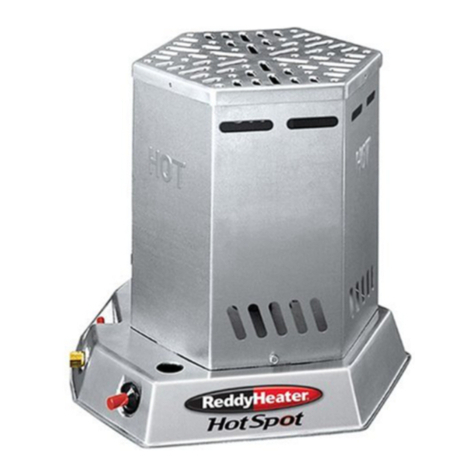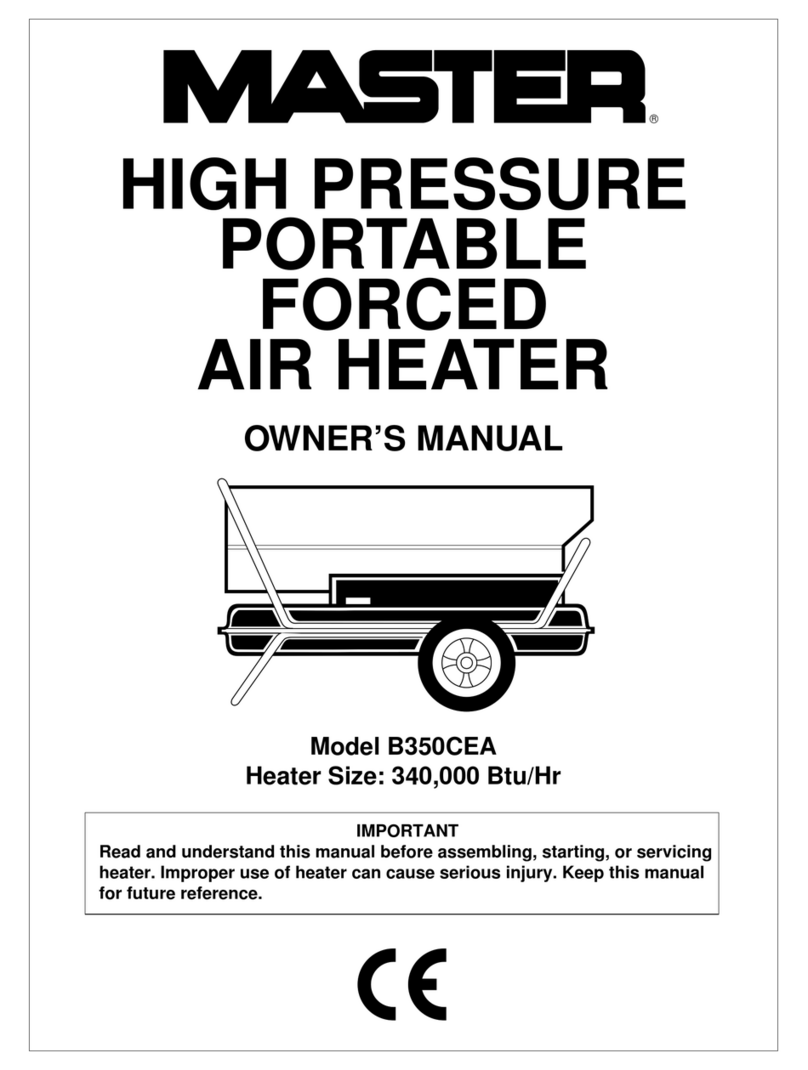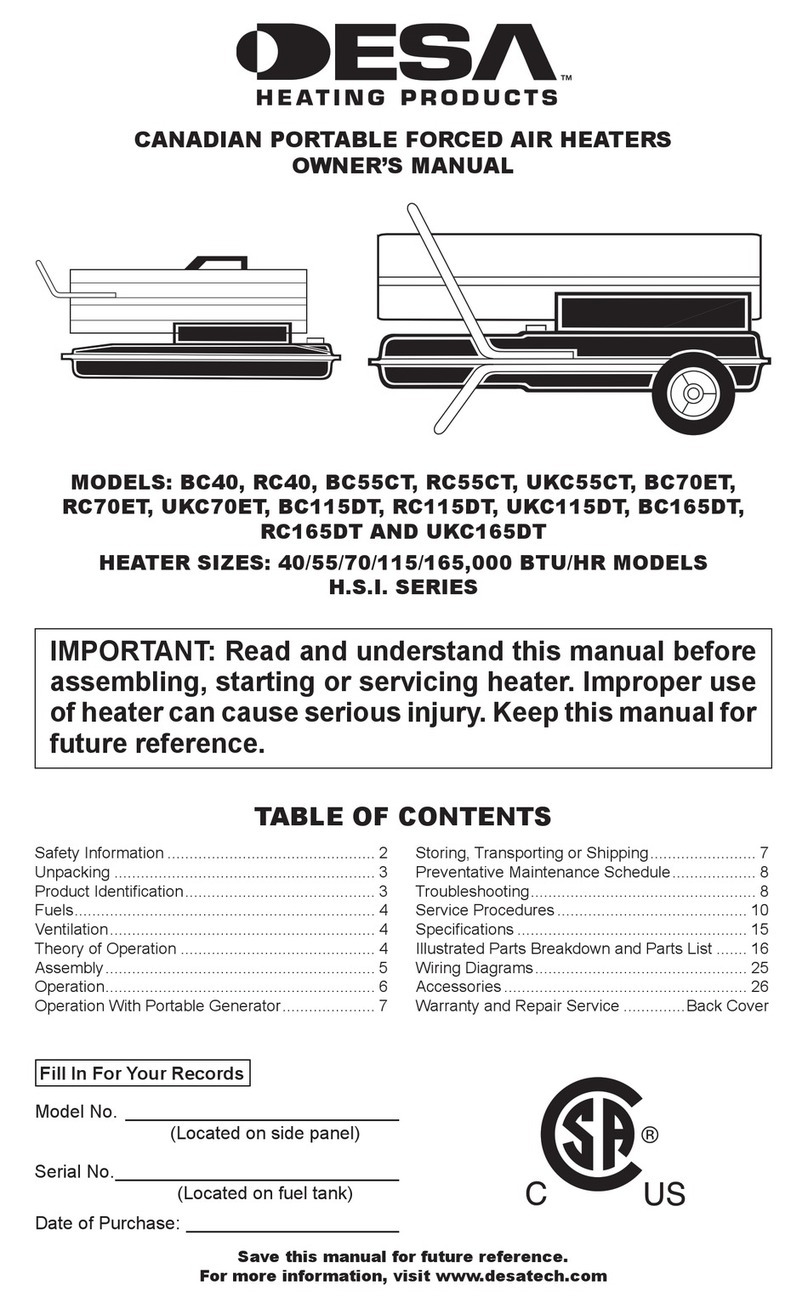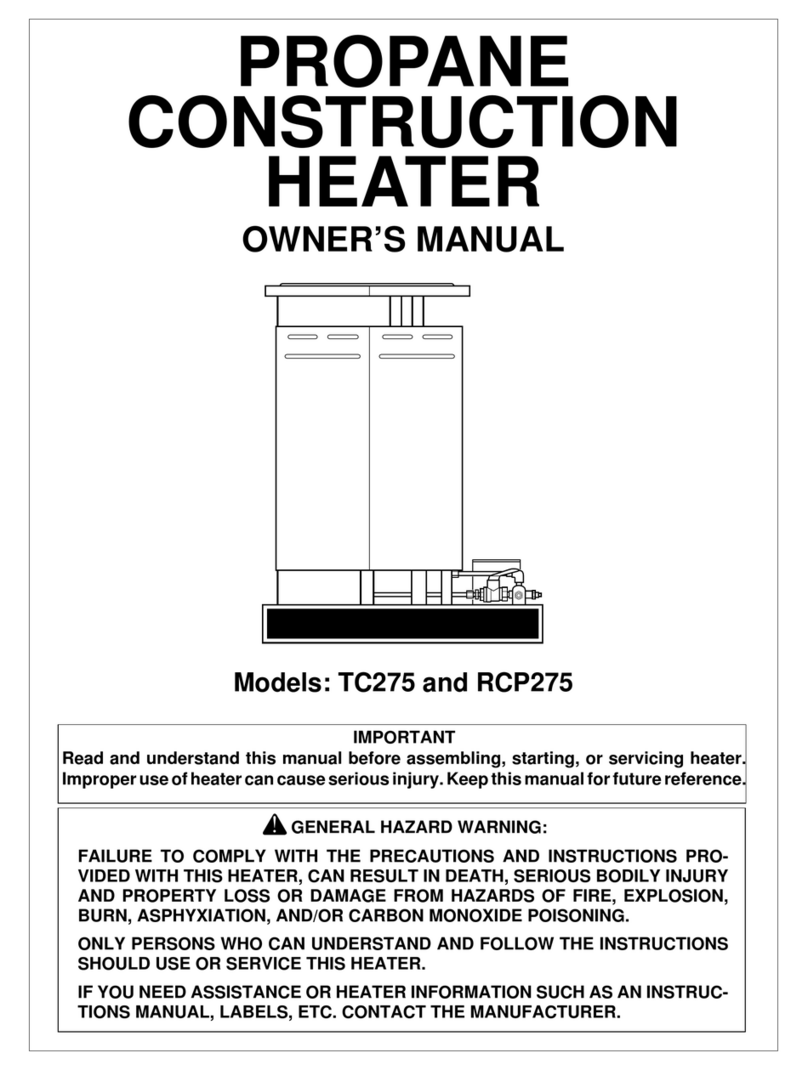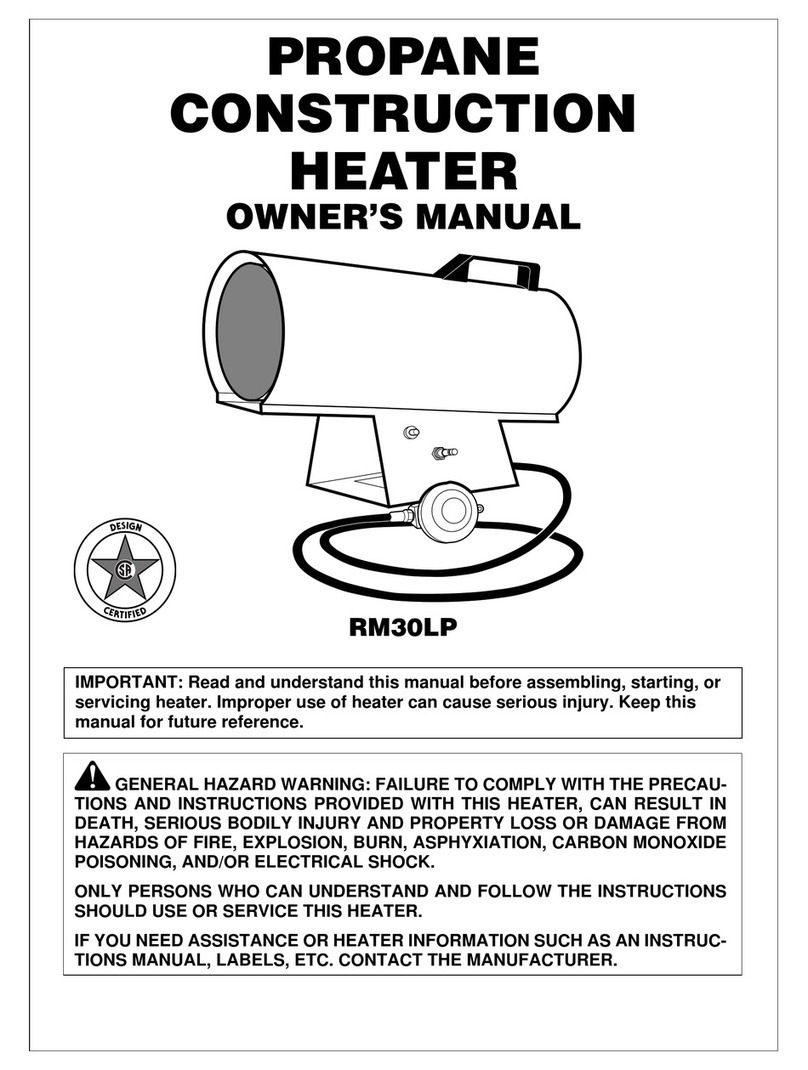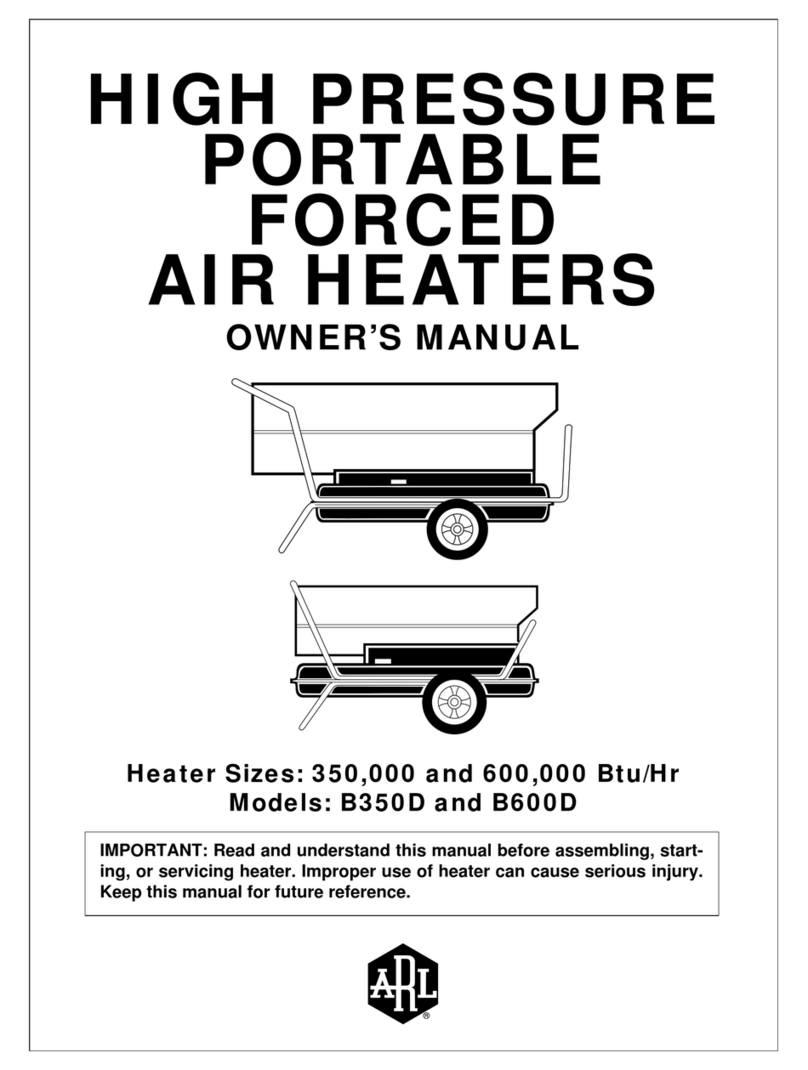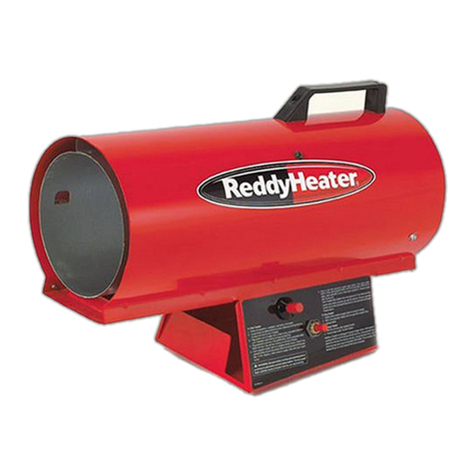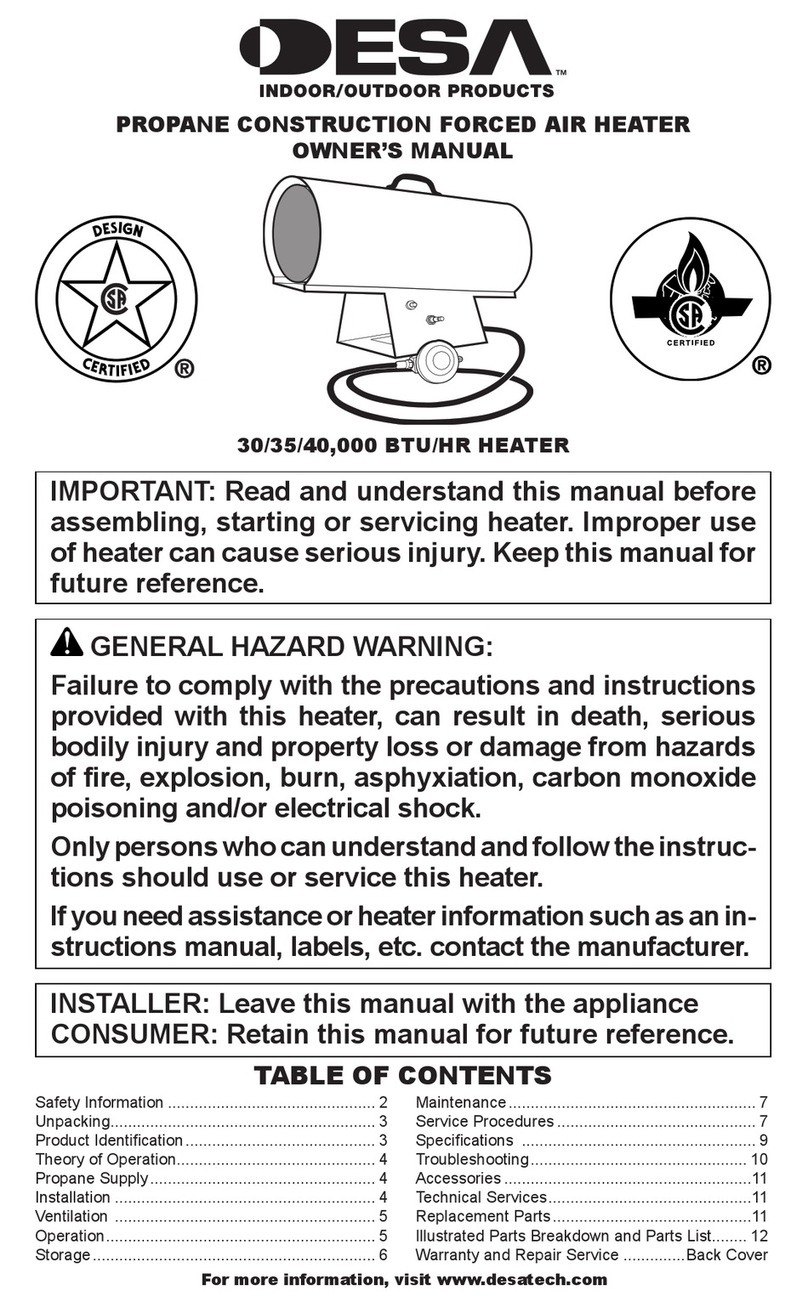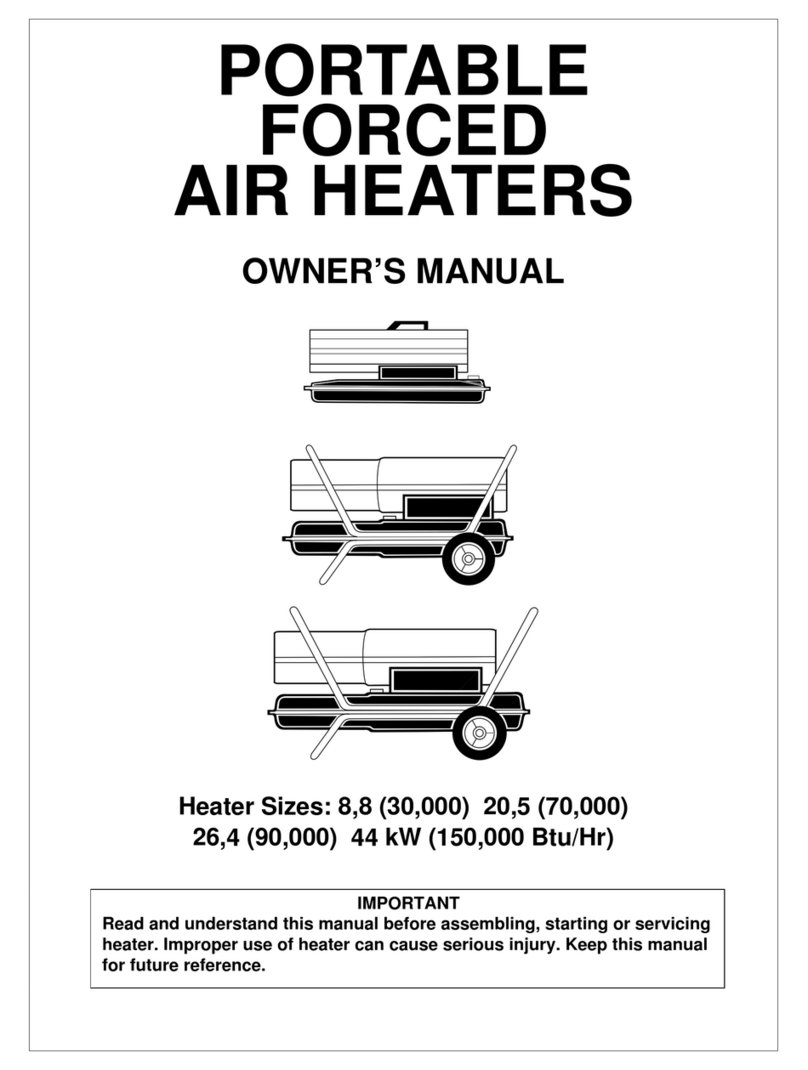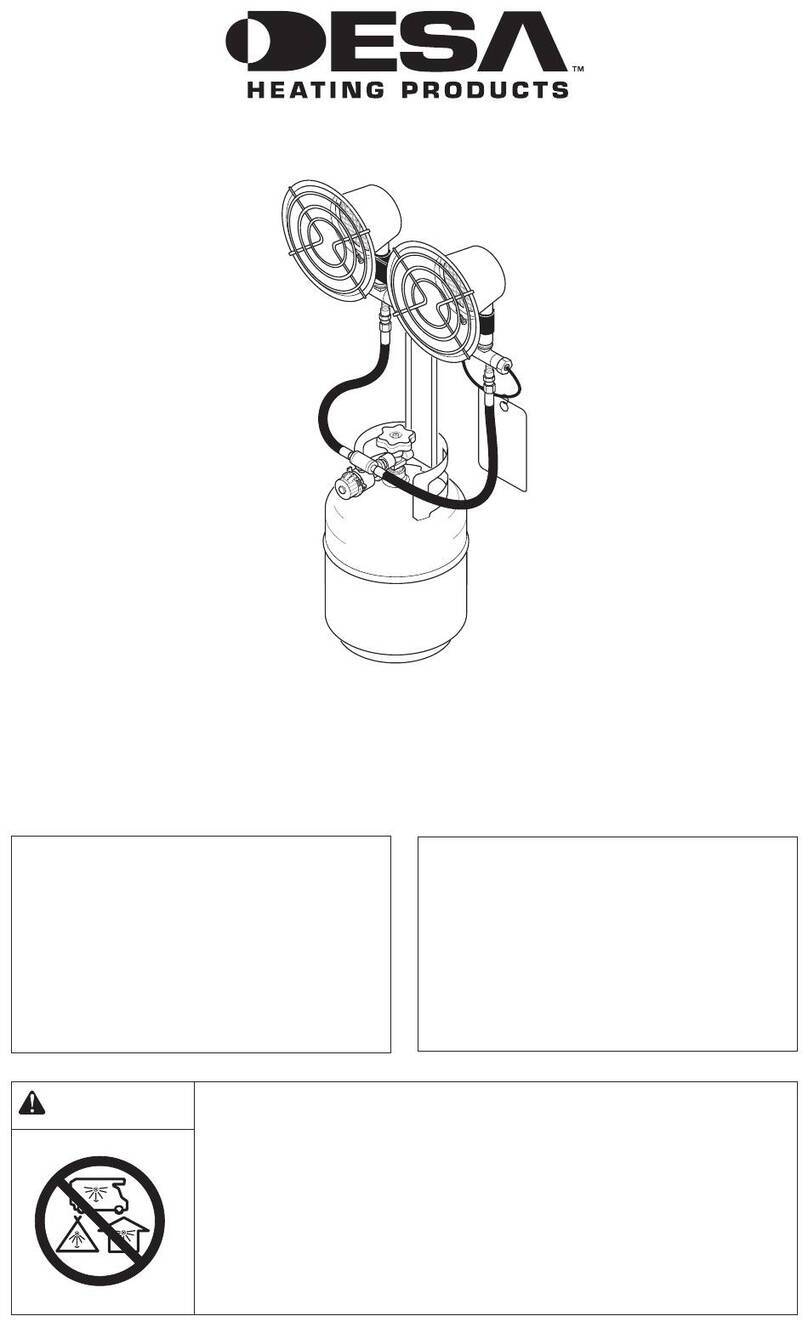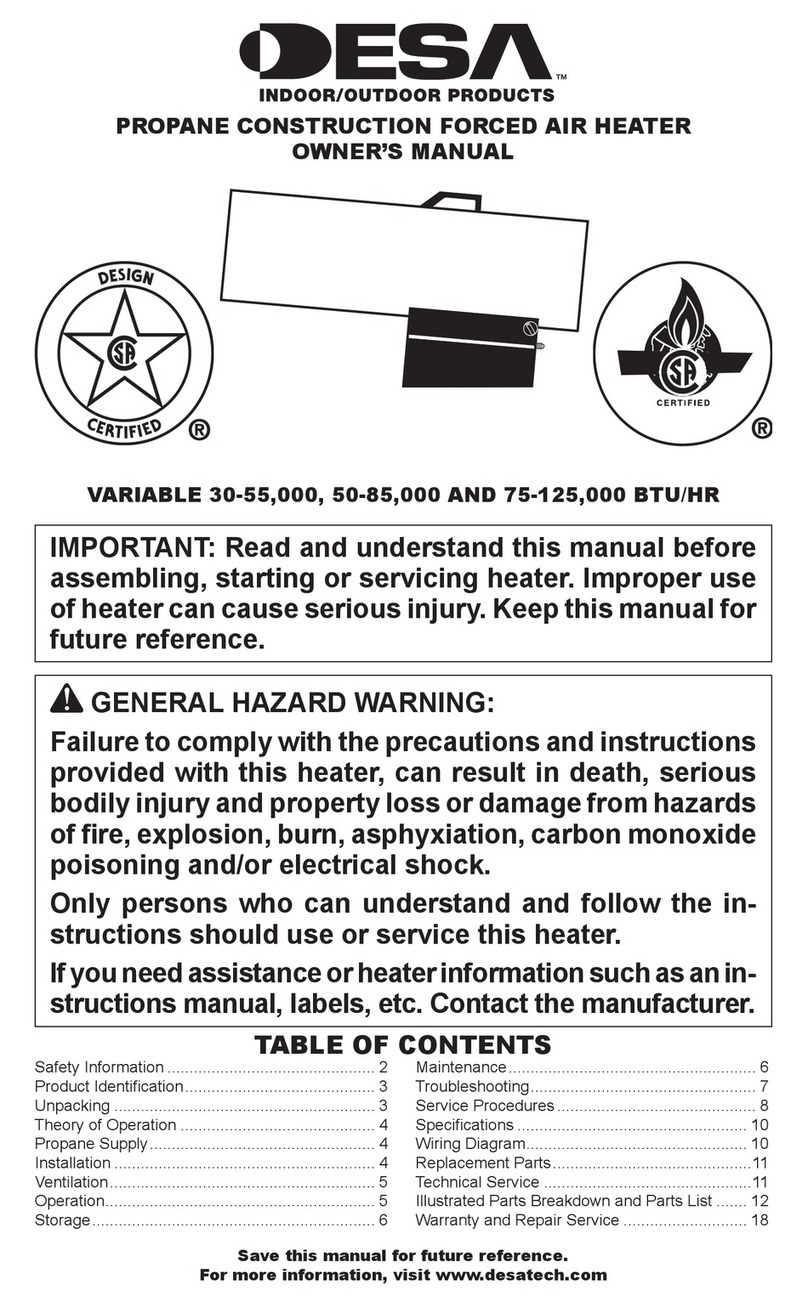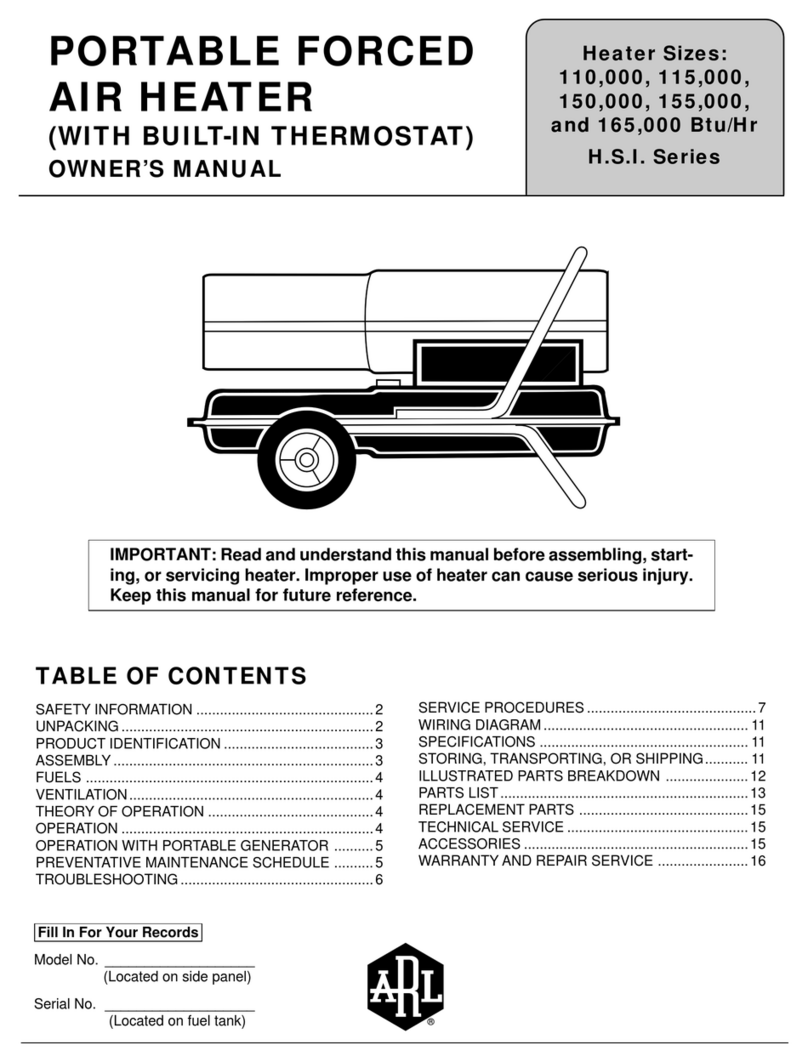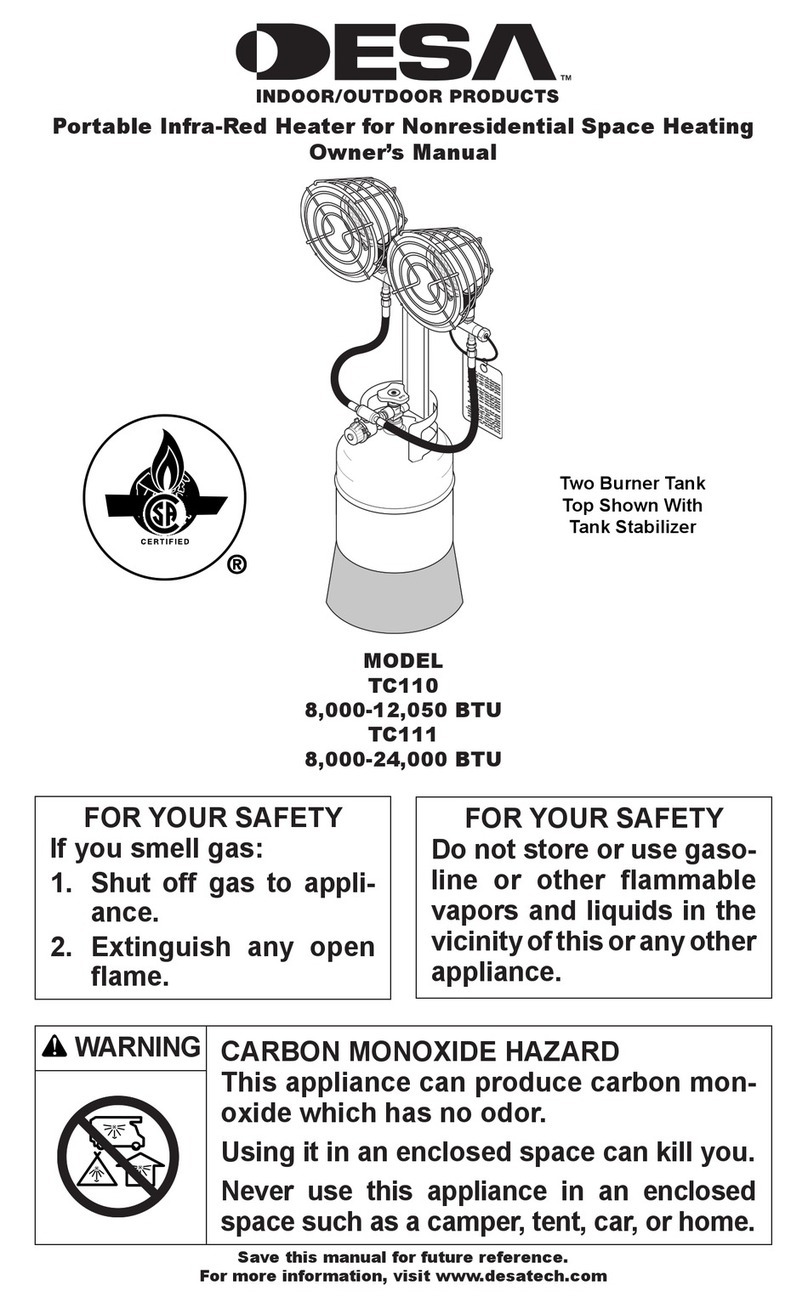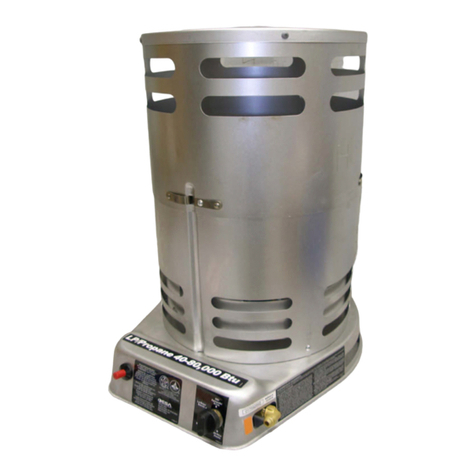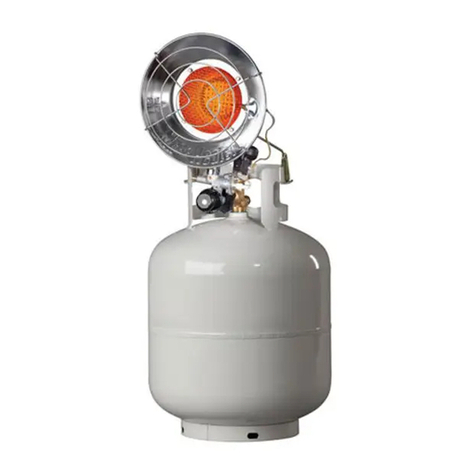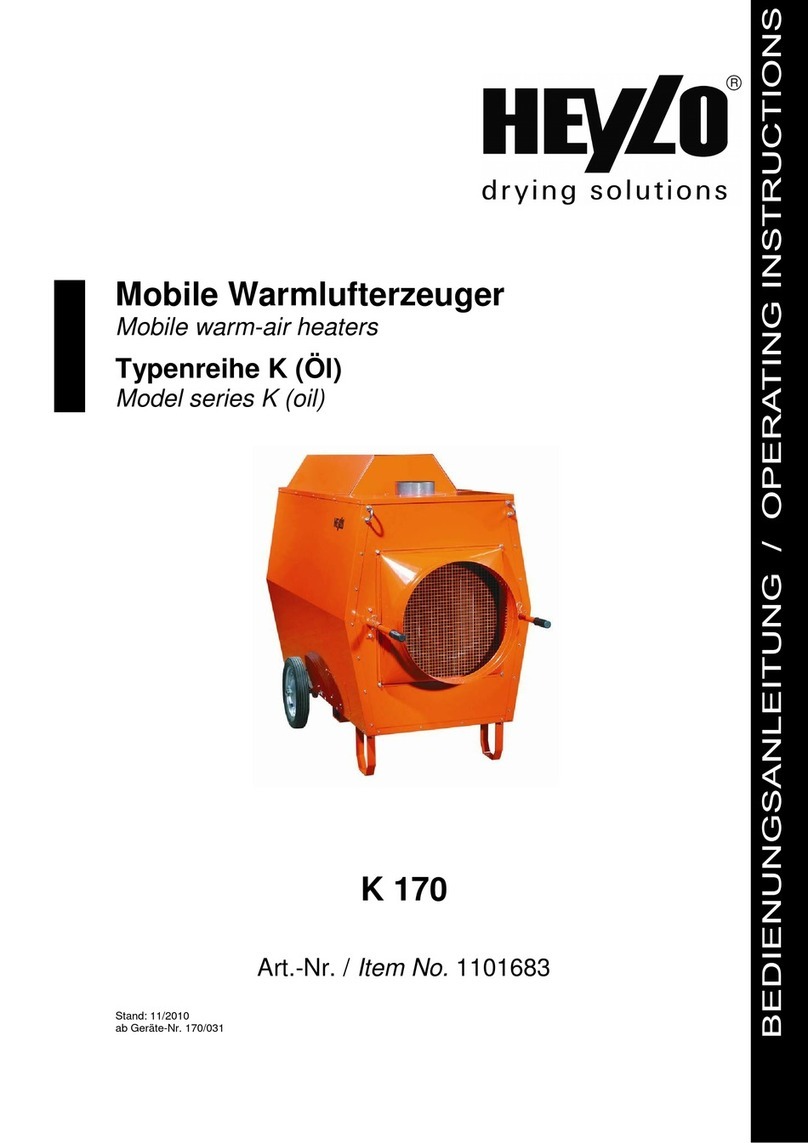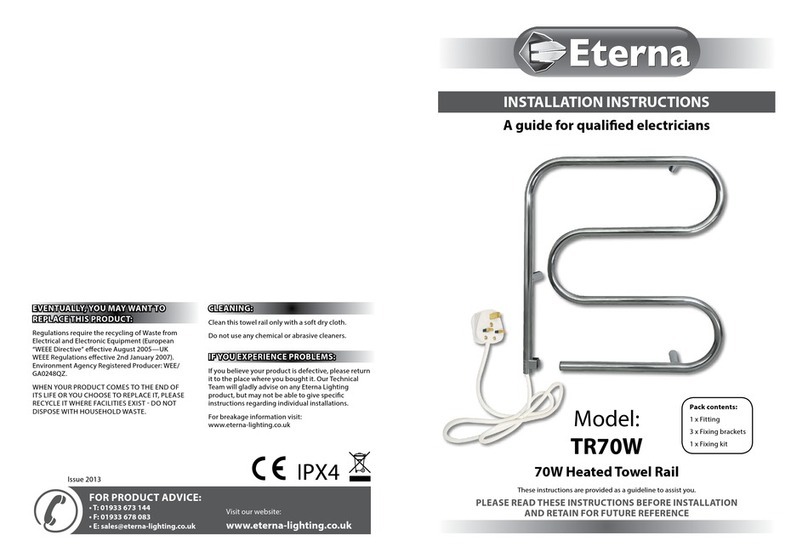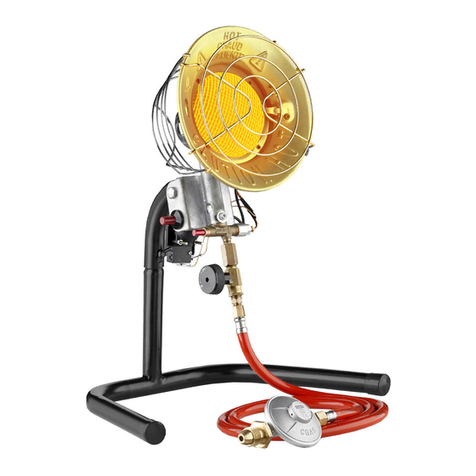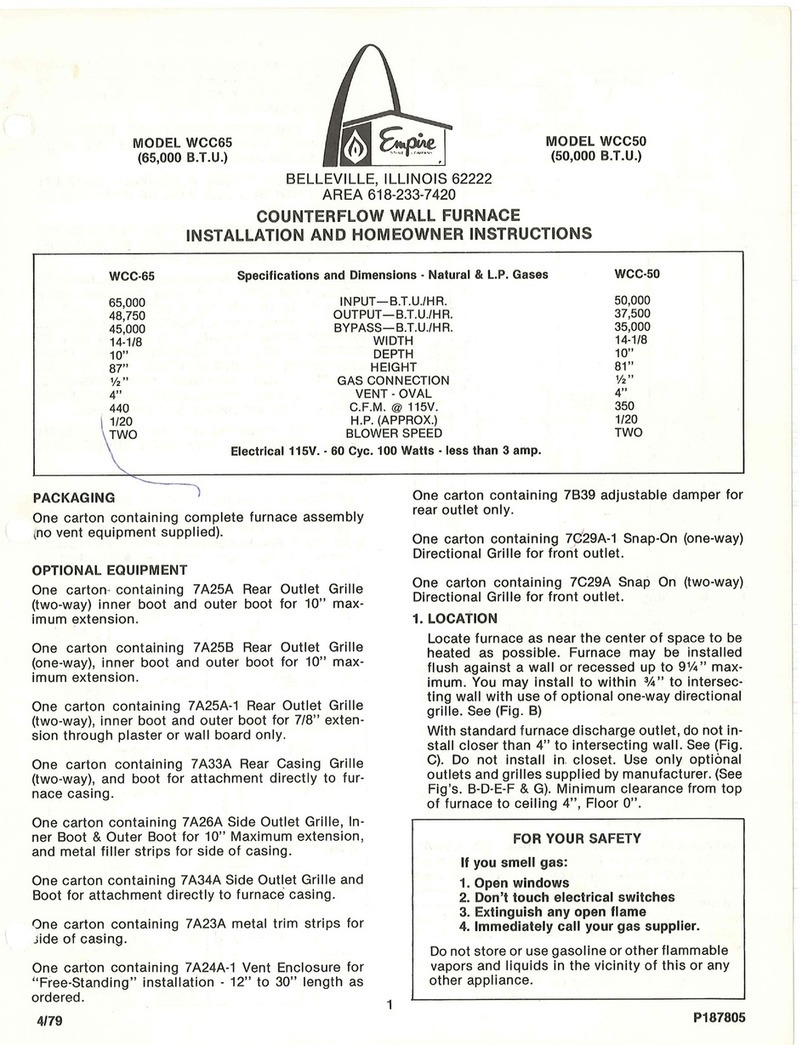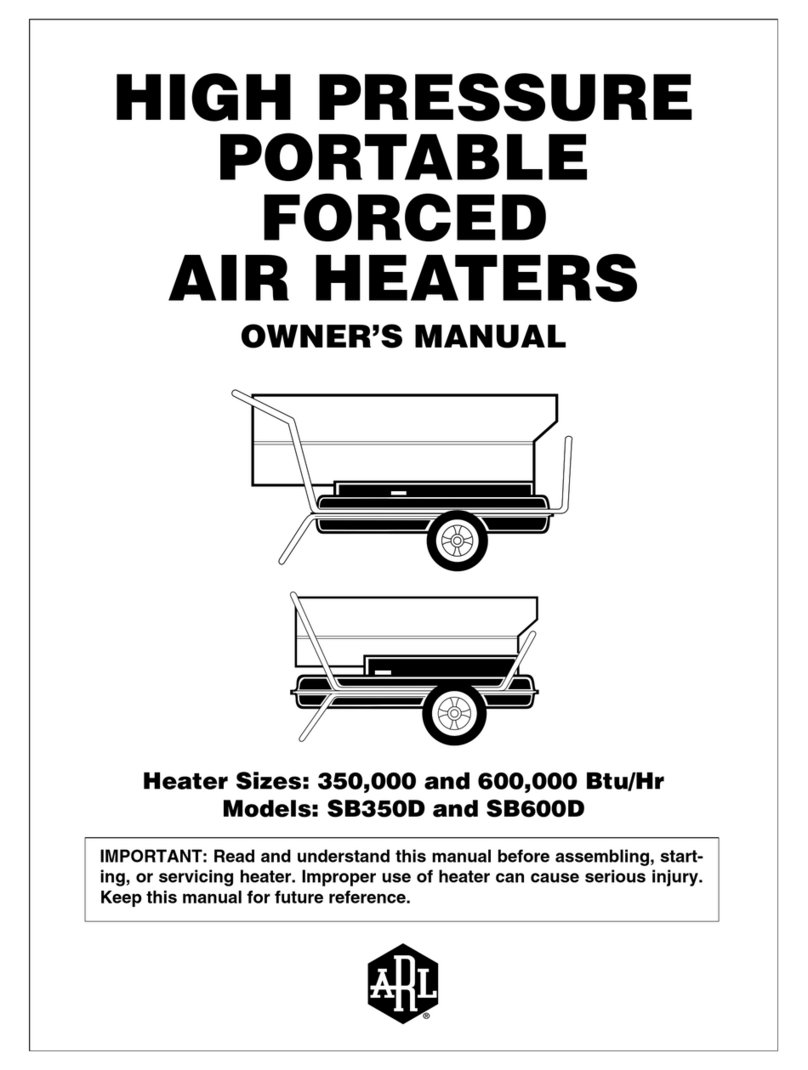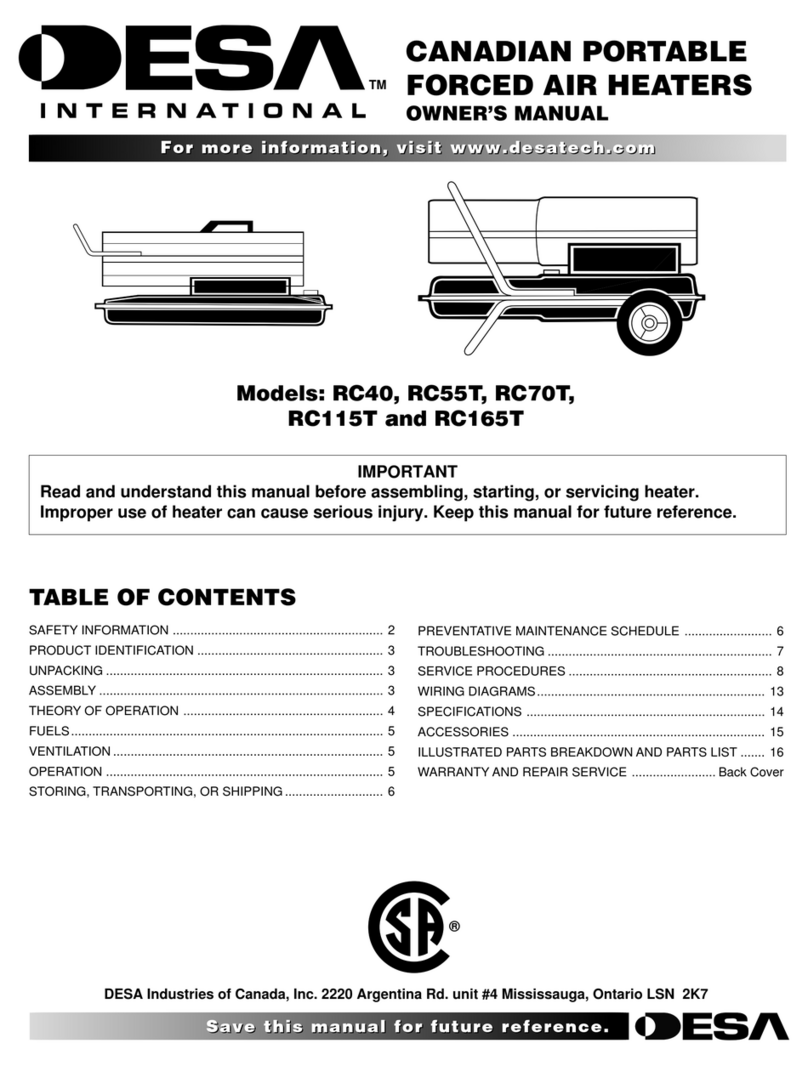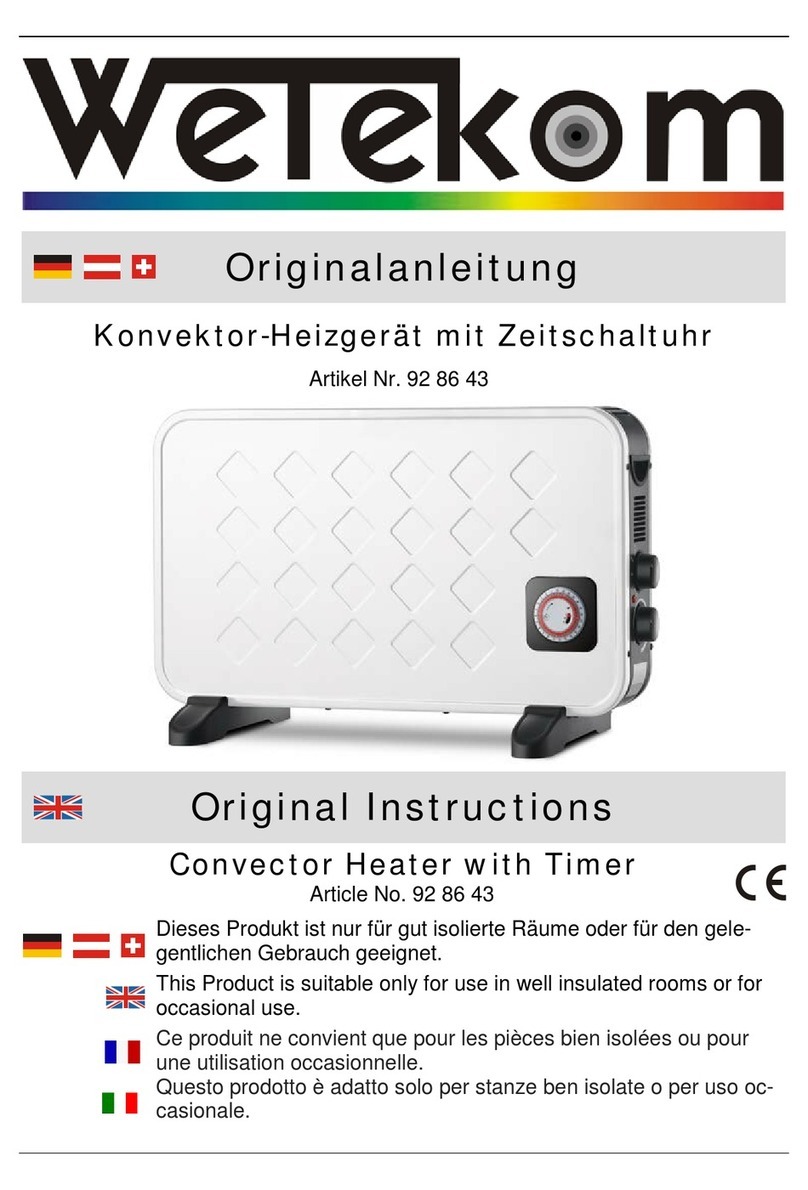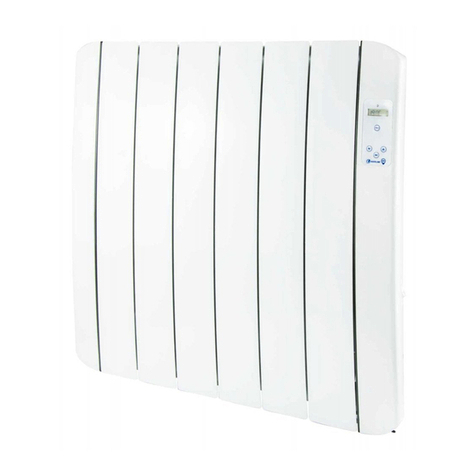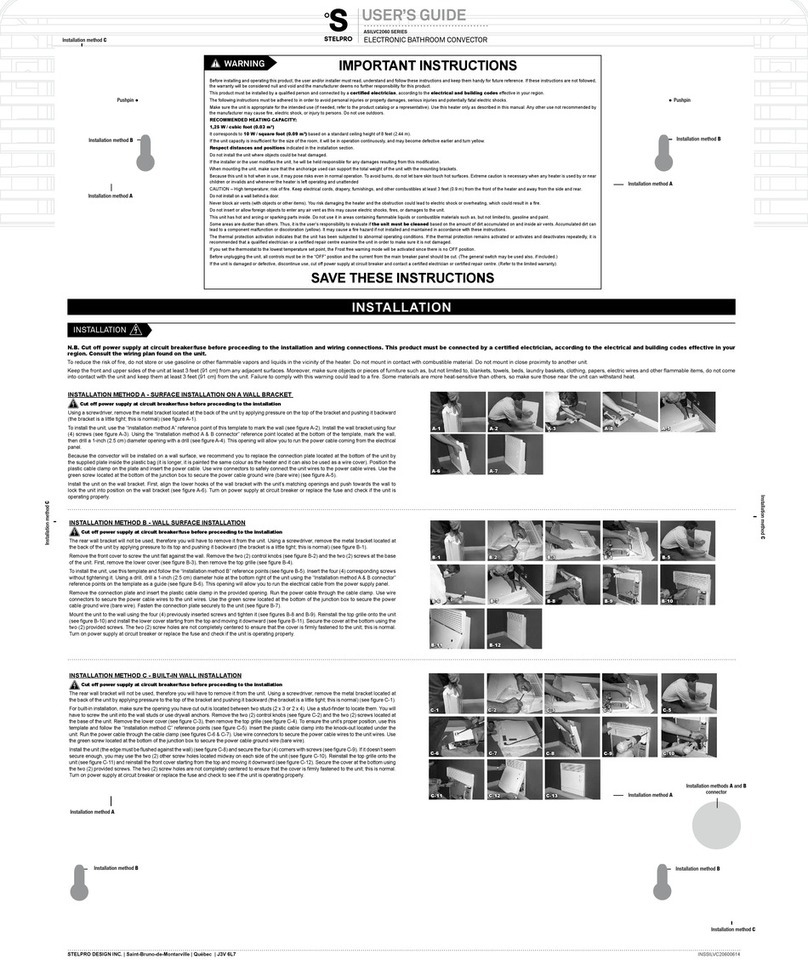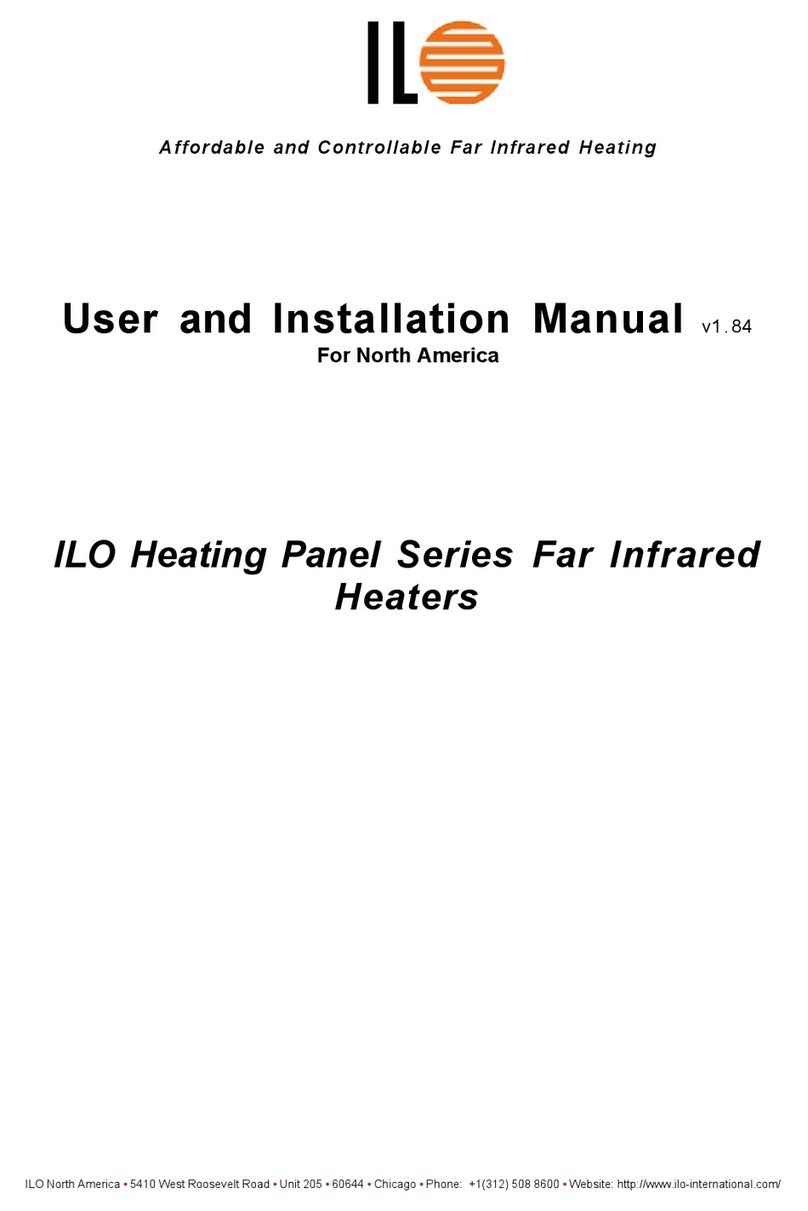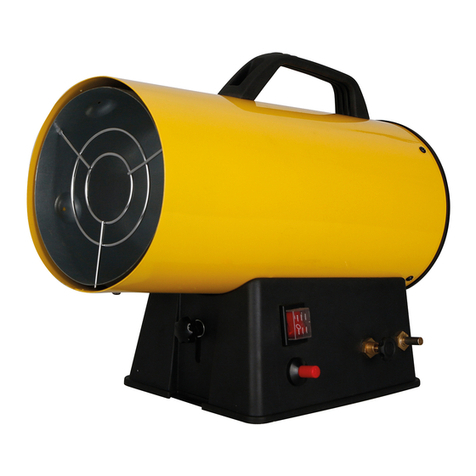
2
102569
PORTABLE FORCED AIR HEATER
200,000 Btu/Hr
• Use only kerosene or No. 1 fuel oil to
avoidriskoffireorexplosion.Neveruse
gasoline, naphtha, paint thinners, alco-
hol, or other highly flammable fuels.
• Fueling
a)Personnel involved with fueling shall
be qualified and thoroughly familiar
with the manufacturer's instructions
and applicable federal, state, and lo-
cal regulations regarding the safe fu-
eling of heating units.
b)Only the type of fuel specified on the
heater's data plate shall be used.
c)All flame, including the pilot light, if
any,shallbeextinguished andtheheater
allowed to cool, prior to fueling.
d)During fueling, all fuellines and fuel-
lineconnectionsshallbeinspectedfor
leaks. Any leaks shall be repaired
priortoreturningtheheatertoservice.
e)At no time shall more than one day's
supply of heater fuel be stored inside
abuilding in the vicinity of the heater.
Bulk fuel storage shall be outside the
structure.
f) All fuel storage shall be located a
minimum of 25 feet from heaters,
torches, welding equipment, and
similarsourcesofignition(exception:
the fuel reservoir integral with the
heater unit).
g)Whenever possible, fuel storage shall
be confined to areas where floor pen-
etrations do not permit fuel to drip
onto or be ignited by a fire at lower
elevation.
h)Fuel storage shall be in accordance
withthe federal, state, or local author-
ity having jurisdiction.
• Never use heater where gasoline, paint
thinner, or other highly flammable va-
pors are present.
• Follow all local ordinances and codes
when using heater.
• Heaters used in the vicinity of tarpau-
lins, canvas, or similar enclosure mate-
rialsshallbelocatedasafedistancefrom
suchmaterials.Therecommendedmini-
mum safe distance is 10 feet. It is fur-
ther recommended that these enclosure
materials be of a fire retardant nature.
These enclosure materials shall be se-
curely fastened to prevent them from
ignitingor from upsetting the heater due
to wind action.
Carbon Monoxide Poisoning: Early
signs of carbon monoxide poisoning re-
semble the flu, with headaches, dizziness,
and/or nausea. If you have these signs, the
heater may not be working properly. Get
fresh air at once! Have heater serviced.
Some people are more affected by carbon
monoxidethan others. These include preg-
nant women, persons with heart or lung
diseaseoranemia,thoseundertheinfluence
of alcohol, and those at high altitudes.
Make certain you read and understand all
Warnings. Keep this manual for reference.
Itisyourguidetosafeandproperoperation
of this heater.
SAFETY
INFORMATION
DANGER: Carbon monoxide
poisoning may lead to death!
WARNINGS
IMPORTANT: Read this Owner’s
Manual carefully and completely
before trying to assemble,
operate, or service this heater.
Improper use of this heater can
causeseriousinjuryordeathfrom
burns, fire, explosion, electrical
shock, and carbon monoxide
poisoning.
• Use only in well-vented areas. Before
using heater, provide at least a three-
square-foot opening of fresh, outside
air for each 100,000 Btu/Hr of rating.
Thisheaterproduces carbon monoxide,
which is listed by the State of Califor-
niaasareproductivetoxinunderPropo-
sition 65.
• Use only in places free of flammable
vapors or high dust content.
• Use only the electrical voltage and fre-
quency specified on model plate.
• Use only a three-prong, grounded ex-
tension cord.
• Minimum heater clearances from com-
bustibles:
Outlet: 8 Ft. Sides: 4 Ft.
Top: 4 Ft. Rear: 4 Ft.
• Locate heater on a stable and level sur-
face if heater is hot or running or a fire
may occur.
• When moving or storing heater, keep
heater in a level position or fuel spill-
age may occur.
• Keep children and animals away from
heater.
• Unplug heater when not in use.
• Whenusedwiththermostat,heatermay
start anytime.
• Never use heater in living or sleeping
areas.
• Never block air inlet (rear) or air outlet
(front) of heater.
• Never move, handle, refuel, or service
a hot, operating, or plugged-in heater.
• Never attach duct work to front or rear
of heater.
•Warning to NewYork City Residents
For Use OnlyAt Construction Sites
inaccordancewithapplicableNYCcodes
under NYCFD certificate of approval
#4803, #4899, #4908, #4909, or #4934.

